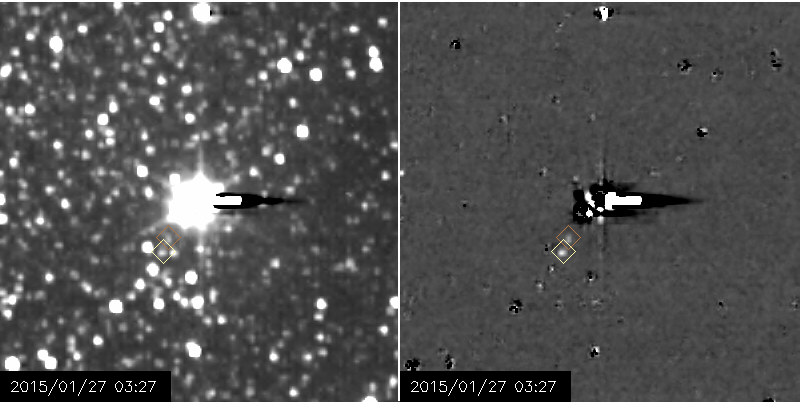Exactly 85 years after Clyde Tombaugh’s historic discovery of Pluto, the NASA spacecraft set to encounter the icy dwarf planet this summer is providing its first views of the small moons orbiting Pluto.
The moons Nix and Hydra are visible in a series of images taken by the New Horizons spacecraft from Jan. 27-Feb. 8, at distances ranging from about 125 million to 115 million miles (201 million to 186 million kilometers). The long-exposure images offer New Horizons’ best view yet of these two small moons circling Pluto which Tombaugh discovered at Lowell Observatory in Flagstaff, Arizona, on Feb. 18, 1930.
“Professor Tombaugh’s discovery of Pluto was far ahead its time, heralding the discovery of the Kuiper Belt and a new class of planet,” says Alan Stern, New Horizons principal investigator from Southwest Research Institute, Boulder, Colorado. “The New Horizons team salutes his historic accomplishment.”
Assembled into a seven-frame movie, the new images provide the spacecraft’s first extended look at Hydra (identified by a yellow diamond ) and its first-ever view of Nix (orange diamond). The right-hand image set has been specially processed to make the small moons easier to see.”It’s thrilling to watch the details of the Pluto system emerge as we close the distance to the spacecraft’s July 14 encounter,” says New Horizons science team member John Spencer, also from Southwest Research Institute. “This first good view of Nix and Hydra marks another major milestone, and a perfect way to celebrate the anniversary of Pluto’s discovery.”
